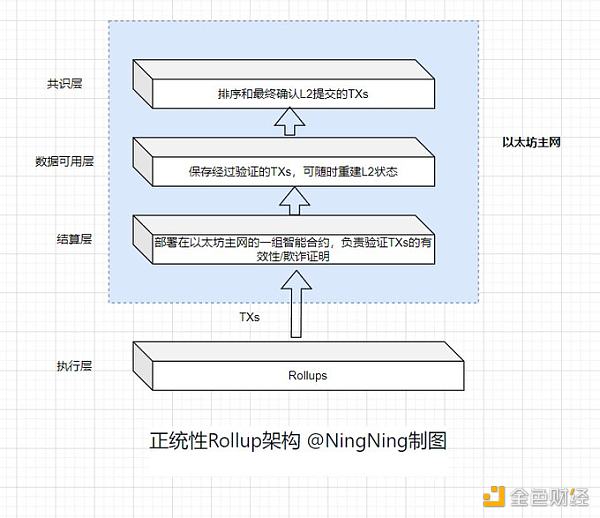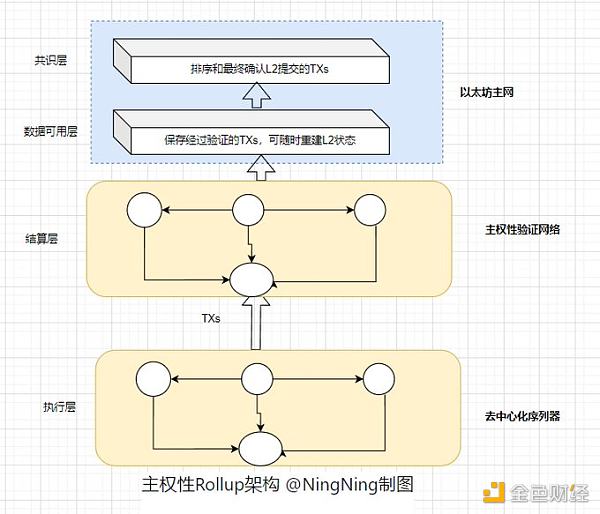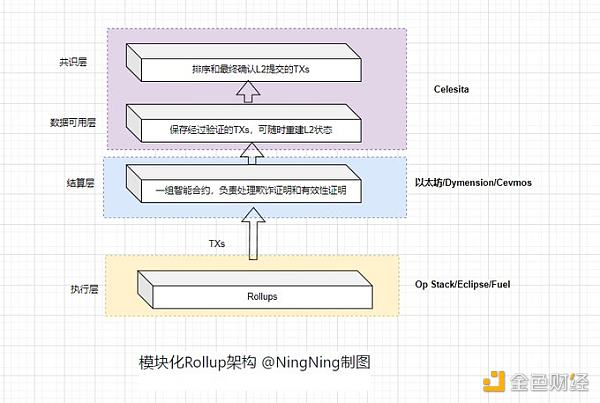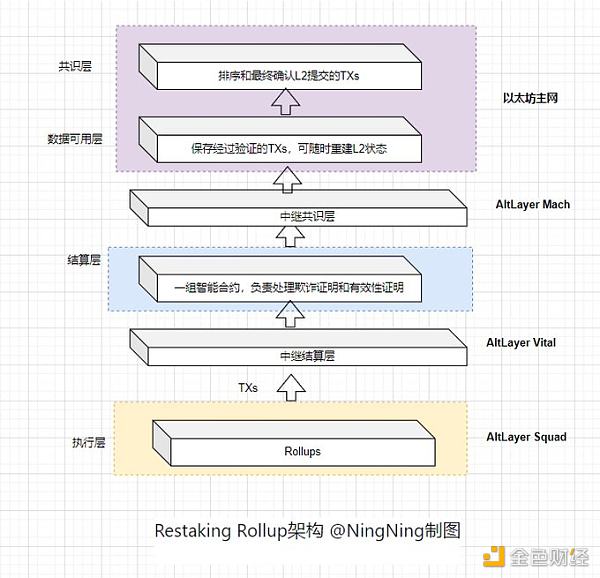Author: NingNing, independent researcher Source: X, 0xNing0x
The current status of the Rollup market - orthodox Rollup, sovereign Rollup, modular Rollup and Restaking Rollup competing for supremacy
23 years One of the themes of the scalability competitive market is that Rollup swallows Alt L1’s TVL, users and ecological Dapp. Arbitrum, Optimism, Zksync, Starknet, etc., as the Knights Templar that protect the Ethereum ecosystem, have made great contributions to the Ethereum ecosystem.
But when Arbitrum tried to build a hub-and-spoke structure of the L1-L2-L3 Rollup scalable route to consolidate its Rollup leading position and vested interests , things started to go wrong.
Fortunately, neither Optimism nor Zksync followed Arbitrum’s barbaric actions. Instead, they chose the Stacks parallel structure and demoted themselves to the third level of the Stack structure. An instance.
Moreover, even the Ethereum sidechain Polygon, which is not a sidechain of Ethereum, did not choose the route of Arbitrum, but chose to follow the route of Optimism and Zksync , launching the Stacks-like parallel structure Polygon CDK. However, the settlement layer of Polygon CDK is the Polygon PoS main network, not the Ethereum main network.
However, most of the Rollups deployed using Stacks SDK need to share data availability and settlement layers with it, and do not achieve true parallelism and sovereignty.
This is still compared with the decentralized scalability architecture of 1024 shards + 1 shard for n Rollups in the Ethereum DankSharding sharding vision. Far from it.
In the 24th year, stimulated by new primitives such as modularization and restaking, Rollup began to differentiate into four types: orthodox Rollup, sovereign Rollup, and module Transformation Rollup, Restaking Rollup:
Legitimate Rollup
Legitimate Rollup actively pursues the role of Ethereum One of the outsourcers of the execution layer of Fang, pursuing EVM equivalence or even Ethereum equivalence, Optimism, Linea, and Scroll fall into this category. Arbitrum has the same architecture as them, but is not as aggressive as the above three in pursuing Ethereum equivalence, and is more developer-centric.

Sovereign Rollup
Sovereign Rollup is represented by Starknet jointly launched by Vitalik fucking Metis, Vitalik and Eli.
Their common architectural features are a decentralized sequencer network and a sovereign verification network (settlement layer)
Because Metis uses the Op Rollup mechanism and Starknet uses the Zk Rollup mechanism, although their sovereignty verification network architecture adopts the design idea of PBS (separation of block submitters and block builders), there are The difference: Starknet’s sovereignty verification network architecture adds some node roles, such as Prover (prover) responsible for generating ZKP (zero-knowledge proof)
And because The cost of submitting ZKP validity verification to the Ethereum main network is lower than fraud proof, so Starknet still uses Ethereum as the consensus layer and data availability layer.
Metis will simply go to the end and only use the Ethereum mainnet as a memo storage or bulletin board. Its relationship with the Ethereum main network is similar to the current relationship between most Bitcoin L2 and the Bitcoin main network, which can be said to be full of sovereignty.

Modular Rollup
Modular Rollup is currently divided into two sub-types: universal Rollup such as Manta and Dapp such as Aevo and Lyra Rollup.
The current state of modular Rollup makes people feel that it is just changing the DA layer from Ethereum to modular blockchain DA such as Celesita and Avail.
But such an idea ignores the deeper meaning of modular rollup, that is, modular rollup is an innovation and challenge to the current mainstream rollup center-and-spoke structure.
Modular Rollup gives Dapp developers the ability to escape from the control of Ethereum and universal L2, which can ease the current construction for the Ethereum Foundation and VC The strange phenomenon of Rollup, and return to the user-centered product paradigm.

Restaking Rollup
Restaking Rollup is a new primitive jointly launched by Raas service providers AltLayer and EigenLayer.
Compared with Metis in sovereign Rollup, its verification network and consensus network are guided from the EigenLayer AVS node network, and the economic security comes from Restaking's ETH and LST is more secure than the L2 native protocol token.
Restaking Rollup, a relay layer named AltLayer Vital is inserted before the settlement layer, and a relay layer named Altlayer is inserted before the consensus layer and data availability layer. Mach's relay layer carries some functions of the settlement layer, consensus layer and data availability layer respectively.
Such an architecture can improve the security and final confirmation of Rollup and reduce the cost of data availability verification.

Restaking Rollup also significantly reduces the threshold and cost of deploying Rollup. Currently, Altlayer supports the deployment of one Rollup in 5 minutes with zero code.
Among the above four types, orthodox rollup and sovereign rollup are dominated by universal rollup, occupying the majority of the market share. However, their deployment and operation costs are very heavy and are not suitable for Dapp developers.
The modular Rollup and Restaking Rollup of the light protocol paradigm have given Dapp developers new choices in 2024.
 Catherine
Catherine










